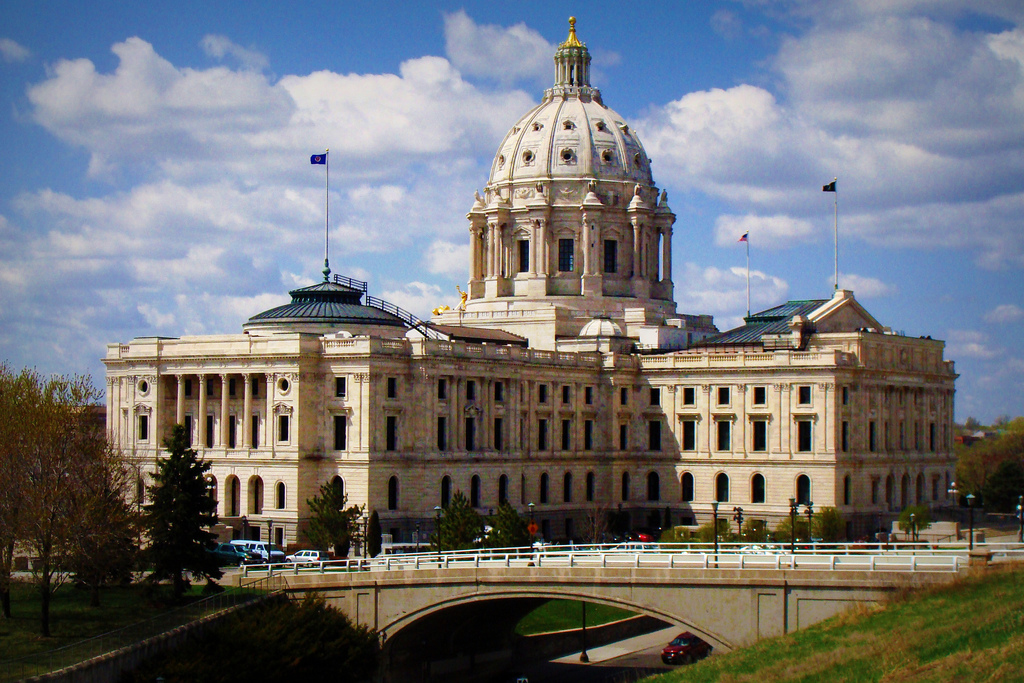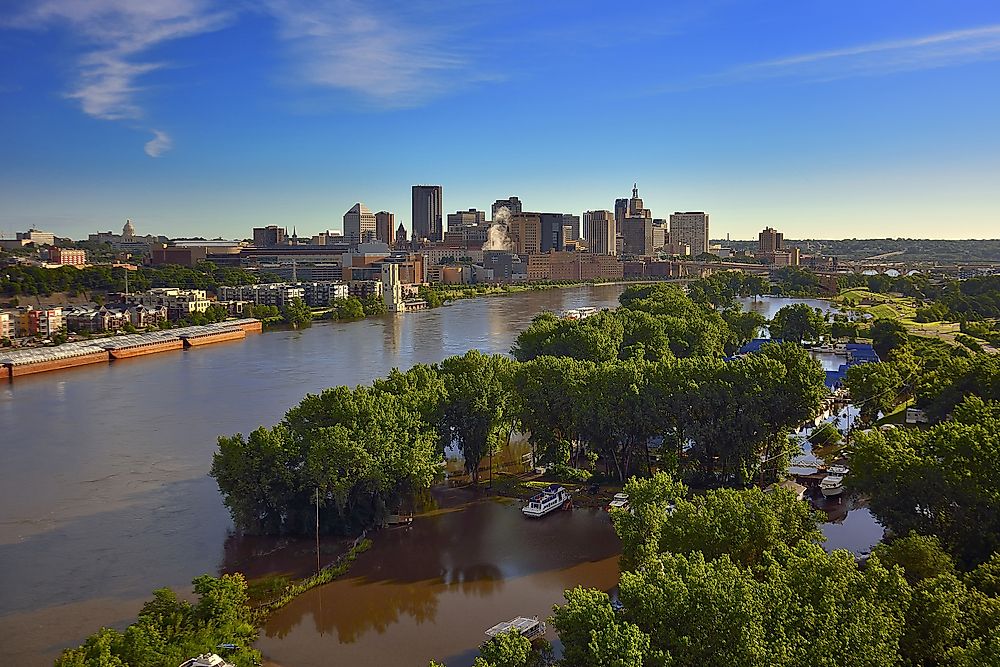Minnesota Capital: Saint Paul - History & Facts | Learn More!
Why is Saint Paul, Minnesota, the state capital, rather than its larger, more well-known neighbor, Minneapolis? The answer lies in a combination of historical circumstance, strategic foresight, and a bit of political maneuvering, all culminating in the selection of Saint Paul as the seat of Minnesota's government.
Saint Paul, a city steeped in history, serves as the capital of the U.S. state of Minnesota. It also holds the distinction of being the seat of Ramsey County. Situated in the southeastern part of the state, Saint Paul occupies a crucial geographical position, located at the head of navigation on the Mississippi River, near its confluence with the Minnesota River. This strategic location played a significant role in its selection as the capital.
The journey of Saint Paul to becoming the capital of Minnesota began in the mid-19th century. Following the Louisiana Purchase of 1803, the area that would become Minnesota came under American control. As the Minnesota Territory was formed in 1849, territorial officials made a pivotal decision: they selected Saint Paul as the capital. This choice wasn't made arbitrarily; it was a reflection of the city's growing importance as a hub for trade and transportation, particularly due to its location on the Mississippi River.
- August Alsina Age How Old Is The Rb Star In 2024
- Brent Rivera Pierson Wodzynski Are They Dating Relationship Explored
When Minnesota achieved statehood in 1858, Saint Paul's status as the capital was reaffirmed. This decision solidified its position as the center of political and governmental activity within the state. While Minneapolis, with its burgeoning industrial base and larger population, might have seemed a natural contender, Saint Paul's established role as the capital ensured its continued importance.
The history of Saint Paul's selection is intertwined with political intrigue. An 1857 vote aimed at moving the capital south to Saint Peter was met with resistance. A key figure, territorial legislator Joe Rolette, famously intervened, stealing the approved bill and going into hiding until the legislative session concluded. This act, though unconventional, played a crucial role in preserving Saint Paul's status as the capital.
Saint Paul is often referred to as one of the "Twin Cities," along with Minneapolis. The two cities, situated adjacent to each other, form a major metropolitan area. While Minneapolis may be the larger city in terms of population, Saint Paul retains its significance as the seat of state government. The state capitol building itself is a testament to Saint Paul's importance, with its impressive architecture and historical significance.
The city's history is not just about its political status; it's also about its location. Saint Paul's position on the east bank of the Mississippi River has been crucial to its growth and development. The city is at the head of navigation on the Mississippi River near its confluence with the Minnesota River. This strategic location made it a key center for transportation and trade, contributing to its early prominence. The river itself played a vital role in the city's development, offering a transportation route and shaping its identity. Saint Paul is also known for its numerous historic buildings. The state capitol is one of them, offering insights into the history of the state and the functioning of its government.
While Saint Paul is the capital of Minnesota, it is not the largest city in the state. Minneapolis, which adjoins Saint Paul, holds that distinction. Together, the two cities form a vital metropolitan area, with a combined population that significantly exceeds the population of individual cities. This unique arrangement, with two major cities in close proximity, gives the region a distinct character. The proximity of the two cities has led to various collaborative efforts in areas like transportation, economic development, and cultural activities.
The state capitol building itself, designed by Cass Gilbert, stands as a monument to the state's history. It's a site where the political process is taught and citizen participation in government is encouraged. The building houses the key elements of state government, including the Minnesota Senate, the Minnesota House of Representatives, and the offices of the Attorney General and the Governor.
Saint Paul's legacy is a testament to its strategic advantages and historical importance. It is not only the capital but also a cultural hub, offering a wealth of historical and cultural attractions. It is a city that continues to evolve while retaining its historical roots. It provides a distinct identity shaped by its river location, political significance, and the unique partnership it shares with Minneapolis.
The city is located in Ramsey County, the smallest county in Minnesota, which is densely populated. Saint Paul is a city that is both historically rich and vital to the functioning of the state's government and economic activities.
The state government of Minnesota is based in Saint Paul, and is the location for the states legislature, the governor, and other state offices.
Saint Paul is the seat of the Ramsey County government.
Saint Paul is a major center for business, transportation, and culture, and is home to many educational institutions.
Minneapolis is the largest city in Minnesota and is located adjacent to Saint Paul. Together, they form the "Twin Cities" metropolitan area.
| Attribute | Details |
|---|---|
| City Name | Saint Paul |
| State | Minnesota |
| Capital of | Minnesota |
| County Seat of | Ramsey County |
| Location | Southeastern Minnesota, on the east bank of the Mississippi River, near its confluence with the Minnesota River |
| Metropolitan Area | Twin Cities (with Minneapolis) |
| Population | Over 300,000 (City), Over 3.3 million (Metro Area, as of 2010) |
| Historical Significance | Established as the capital of the Minnesota Territory in 1849; Designated as the state capital when Minnesota was admitted to the Union in 1858. |
| Notable Features | Home to the Minnesota State Capitol, the seat of state government. Head of navigation on the Mississippi River, historical importance in transportation and trade. |
| Government | Houses the Minnesota Senate, House of Representatives, and offices of the Attorney General and the Governor. |
| Geographical Context | Bordered by Minneapolis; Part of the Twin Cities metropolitan area; River location contributed to its growth and development. |
| Tags | United States of America subjects, Countries, states, and cities subjects |
| Reference | Wikipedia |
In summary, Saint Paul's selection as the capital of Minnesota was a pivotal moment in its history. It wasn't just a matter of chance; it was a consequence of careful planning, its strategic location, and its burgeoning role as a center for commerce and transportation. From the mid-19th century, when it was chosen as the capital of the Minnesota Territory, Saint Paul's status as the state capital was reaffirmed when Minnesota achieved statehood in 1858. The selection of the state's capital was influenced by its geographic advantages, political maneuvers, and historical trends. Its role as the capital has shaped the identity of Saint Paul and its ongoing significance in the state of Minnesota.
- Unveiling The Dan Band Members History More Insights
- Crumbl Cookies Nutrition Calories Macros Facts Updated

Minnesota State Capital St. Paul

Minnesota State Capitol Building in Saint Paul, Minnesota Encircle Photos

What Is the Capital of Minnesota? WorldAtlas